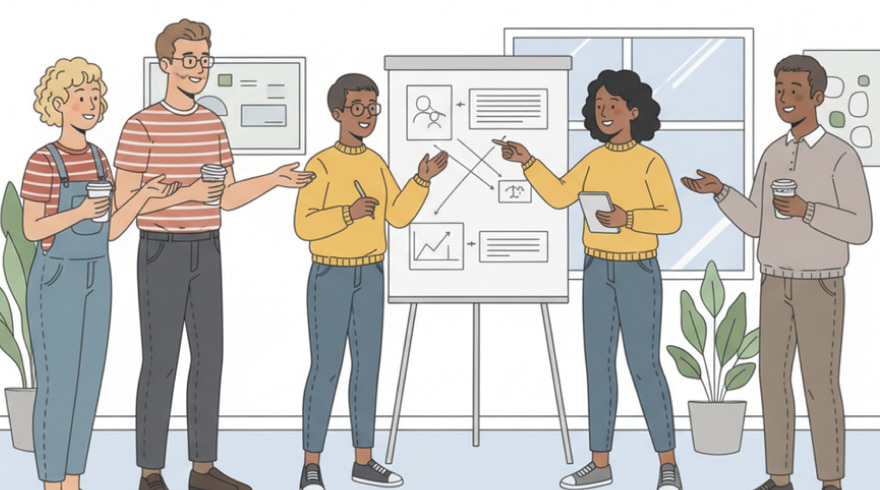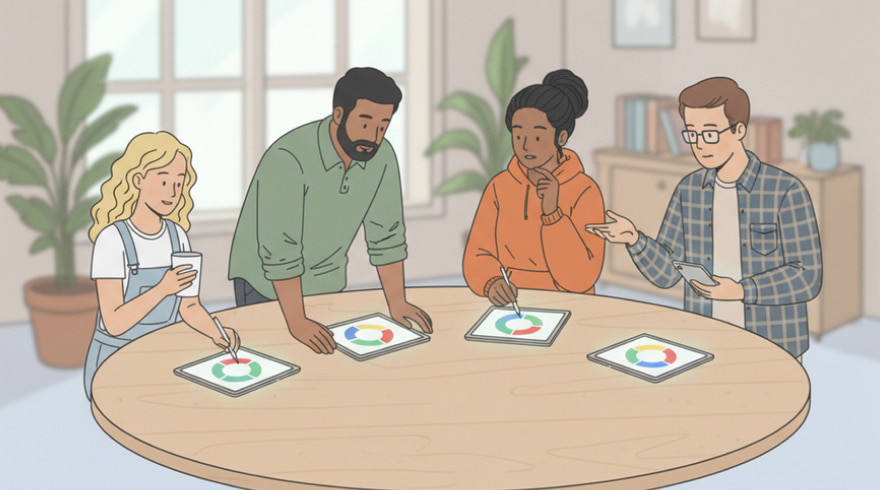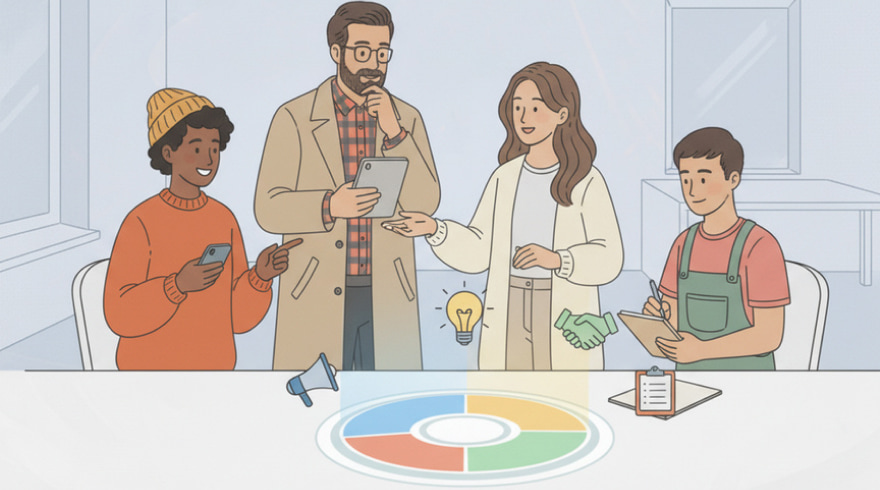The Ultimate Guide to Online DISC Testing: Clarity, Accuracy, and Practical Outcomes
- 23 October 2025

Why People Flock to DISC?
Understanding how you prefer to communicate, make decisions, and manage stress can change the way you work and the way others experience you. The DISC model distills observable behavior into four clear dimensions, giving you language for traits that previously felt vague or subjective. Online assessments take this classic framework and make it quick to access, easy to complete, and simple to share with coaches, managers, or teammates. Because results highlight patterns rather than fixed labels, you can translate insights into action without feeling boxed in by a type.
Beyond convenience, modern platforms turn behavioral insights into practical guidance, mapping strengths to roles, projects, and collaboration norms. Many tools add contextual tips, such as how to present ideas to different styles or where conflict tends to emerge during deadlines. For budget-conscious learners, a reliable option is a free DISC test online that balances brevity with insight and delivers a digestible profile you can reference later.
When you need a quick behavioral snapshot before a performance review, a job interview, or a team kickoff, a web-based assessment fits neatly into your schedule. You can take it from a laptop during a break or on a phone while commuting, and you’ll often receive a well-structured summary in minutes. For learners comparing platforms, a popular choice is a DISC test online that offers clear visuals, straightforward explanations, and practical examples that resonate with daily work.
What the DISC Model Measures and How Online Assessments Translate Behavior Into Data
The DISC framework examines Dominance, Influence, Steadiness, and Conscientiousness, focusing on how people approach challenges, interact with others, pace their work, and follow rules or standards. Unlike personality theories that probe inner motives, DISC tracks outward behavior you can see and adapt. That makes it uniquely actionable for communication, leadership, and teamwork. By answering short, scenario-based items, you generate a pattern of tendencies that can be plotted on a graph or described in natural language for instant application.
- Dominance: directness, drive, and a bias for action under pressure.
- Influence: persuasion, enthusiasm, and social energy in collaborative settings.
- Steadiness: patience, support, and consistency when routines matter.
- Conscientiousness: precision, analysis, and a focus on quality standards.
Short digital questionnaires often use adaptive logic, which refines each item based on your previous responses to increase accuracy. Reports commonly include strengths to leverage, blind spots to monitor, and language you can use to flex style in meetings, emails, and presentations. If you want a quick starting point before investing in coaching, it helps to take DISC test online free so you can validate whether the feedback format and tone suit your needs.
Because behavior shifts with context, the best platforms provide situational advice, stress indicators, and suggestions for collaborating with contrasting styles. You’ll also find sections that map preferred pace, decision-making patterns, and risk tolerance, which makes the framework applicable to both leadership and individual contributor roles. For learners exploring entry-level options, it’s reasonable to try a DISC test free online and then graduate to a paid report if you want deeper analytics or validated benchmarking.
| DISC dimension | Typical behaviors | Key strengths | Growth tip |
|---|---|---|---|
| Dominance | Decisive, assertive, goal-focused | Rapid action, problem solving | Invite input before finalizing decisions |
| Influence | Persuasive, optimistic, expressive | Motivating others, networking | Balance enthusiasm with follow-through |
| Steadiness | Patient, supportive, dependable | Team harmony, reliability | Voice priorities during fast change |
| Conscientiousness | Analytical, careful, structured | Quality, accuracy, planning | Share drafts earlier to gather feedback |
How to Choose a Trustworthy Platform and Compare Report Depth
Selecting the right tool starts with clarity about your purpose: Do you want a quick snapshot for a team exercise, or a comprehensive report to guide a development plan? Consider whether you need coaching prompts, leadership variants, or integration with onboarding programs. Look at sample reports to assess readability, tone, and actionable next steps. You’ll also want transparent information about methodology, item design, and any validation studies that support accuracy across populations and job roles.
For learners on a budget, look for clear explanations, plain-language insights, and straightforward style charts that don’t require expert interpretation. Reports that include situational tips like how to prepare for a performance conversation add immediate value in the workplace. If you’re just getting started and want a light overview before upgrading, a balanced choice is a DISC personality test online free that includes recommendations you can try in your next meeting.
As you compare platforms, check time-to-completion and whether the assessment is mobile-friendly, especially if your team is remote. Favor providers that explain data privacy, consent, and how long responses are stored. When you want a lean profile you can share with a mentor for feedback, one pragmatic route is a free DISC profile test online that summarizes highlights without drowning you in jargon or charts.
Pricing models vary from free samplers to premium bundles that include coaching or team mapping. If you’re running workshops, look for bulk options, facilitator guides, and printable handouts. For educational purposes or club activities, a classroom-friendly pick is a free online DISC personality test that offers simple graphs, brief style descriptions, and suggestions for group activities that spark discussion.
- Assess report clarity: concise summaries with concrete examples win.
- Check accuracy signals: consistent results and clear methodology notes matter.
- Verify privacy: transparent data handling builds trust.
- Evaluate support: tutorials, glossaries, and FAQs smooth adoption.
Benefits for Careers, Teams, Hiring, and Leadership Development
When people share a common language for behavior, misinterpretations drop, and collaboration speeds up. Managers can tailor feedback to how someone prefers to receive information, while contributors learn how to present ideas to different styles. The payoff shows up in fewer misunderstandings, smoother handoffs, and improved meeting dynamics. Teams also gain a repeatable way to debrief projects: What went well for each style, what strained the group, and how can we adjust next time?
Professionals use behavioral profiles to sharpen interview preparation, tailor resumes, and highlight strengths that match role expectations. Leaders draw on insights to flex between coaching and directing, depending on the person and the situation. For individuals refining their communication, a practical entry point is a DISC online test that translates patterns into relatable suggestions you can apply in your next one-on-one or client call.
Organizations can incorporate assessments into onboarding, mentorships, and cross-functional projects to accelerate trust. By visualizing the diversity of styles, teams can proactively assign roles that reduce friction and leverage complementary strengths. For employees mapping growth plans, a streamlined route is an online DISC test that pairs your results with micro-habits, such as how to write clearer emails or negotiate deadlines without tension.
- Improve collaboration with shared vocabulary and expectations.
- Enhance feedback quality by aligning tone and pacing to preference.
- Support hiring by clarifying behavioral fit alongside skills.
- Boost leadership agility with style-flex strategies anyone can practice.
Interpreting Results Responsibly and Turning Insight
Think of your profile as a snapshot of tendencies, not a rigid identity. Results show where you are most comfortable under typical conditions, and they also hint at what may happen under stress. To make insights durable, pick one or two micro-behaviors to test each week, such as pausing to invite input or summarizing next steps at the end of a meeting. Keep notes about what worked so that you can refine your approach and share lessons with colleagues.
Be cautious about using assessments to pigeonhole people or rationalize conflict, because that undermines psychological safety and growth. If your team is exploring the framework together, set norms for confidentiality and voluntary participation to keep trust front and center. When you want to trial the approach before committing, a sensible way forward is a DISC test online for free that lets you practice applying tips and evaluate the usefulness of the report format.
Ethical use also involves transparency about purpose and opt-in consent, particularly in hiring or promotion contexts where power dynamics are sensitive. Managers should frame results as conversation starters, not verdicts, and invite employees to share where the profile feels accurate or incomplete. For a concise summary you can pair with a coaching session, an accessible option is a DISC profile test free online that outlines strengths, cautions, and collaboration strategies without overwhelming detail.
- Focus on behaviors you can try this week to build momentum.
- Invite feedback from coworkers to calibrate your flexing strategies.
- Document patterns across projects to track real-world impact.
FAQ: Common Questions About Digital DISC Assessments
How accurate are web-based DISC tools?
Quality varies, but reputable platforms use clear item design, logical scoring, and validation studies to improve reliability. Accuracy improves when you answer quickly and honestly rather than overthinking each item. Look for transparent documentation, sample reports, and clear descriptions of how the instrument was developed so you can gauge credibility before you rely on the output.
How long does it take to complete and get results?
Most assessments take 8–15 minutes and deliver an instant summary. Some platforms also include extended sections that require a few more minutes, such as stress patterns or collaboration guidance, which you can read immediately. For learners who want extra depth, premium versions often add situational coaching tips and advanced charts to supplement the quick overview you receive at the end.
Can I use it for hiring or only for development?
Many organizations use the framework for development, coaching, and team alignment, while treating hiring decisions with extra caution and multiple data points. Behavioral results should complement skills assessments, structured interviews, and job simulations, never replace them. When you need a screening step that informs conversation rather than dictates outcomes, one flexible approach is a DISC assessment test online that emphasizes DISCussion prompts and ethical application guidelines.
Will my style change over time or across situations?
Your core preferences tend to be stable, but context matters: role expectations, team culture, and stress can shift how you show up. You might display more directness during tight deadlines, then return to a more supportive cadence in routine work. By rechecking your patterns annually, you can spot small shifts and keep your collaboration toolkit current.
What should I do after reading my report?
Pick one meaningful behavior to practice for two weeks, such as asking clarifying questions before offering solutions. Share your focus with a colleague and request feedback, then adjust based on what you learn. Revisit your notes at the end of a project to document wins, challenges, and next steps, turning insight into a sustainable habit system.
Latest News
-
![Your Complete Guide to DISC: Improve Communication, and Thrive Together]() Your Complete Guide to DISC: Improve Communication, and Thrive Together What the DISC Framework Is and Why It Matters The DISC framework is a practical, behavior-focused model that helps people notice patterns in the way they communicate, make decisions, and respond to stress. Rather than boxing anyone in, it reveals tendencies you can flex based on the situation. Lead...
Your Complete Guide to DISC: Improve Communication, and Thrive Together What the DISC Framework Is and Why It Matters The DISC framework is a practical, behavior-focused model that helps people notice patterns in the way they communicate, make decisions, and respond to stress. Rather than boxing anyone in, it reveals tendencies you can flex based on the situation. Lead... - 29 October, 2025
-
![DISC Personality Profile Testing: A Complete, SEO-Optimized Guide for Insightful Growth]() DISC Personality Profile Testing: A Complete, SEO-Optimized Guide for Insightful Growth Understanding the DISC Model and Why It Endures People communicate, decide, and collaborate in strikingly different ways, and the DISC framework distills those patterns into four approachable styles: Dominance, Influence, Steadiness, and Conscientiousness. Rather than labeling individuals, the mode...
DISC Personality Profile Testing: A Complete, SEO-Optimized Guide for Insightful Growth Understanding the DISC Model and Why It Endures People communicate, decide, and collaborate in strikingly different ways, and the DISC framework distills those patterns into four approachable styles: Dominance, Influence, Steadiness, and Conscientiousness. Rather than labeling individuals, the mode... - 28 October, 2025
-
![The Ultimate Guide to Measuring Communication Effectiveness]() The Ultimate Guide to Measuring Communication Effectiveness What Is a Modern Communication Evaluation? People interact in layered ways that blend clarity, tone, timing, and intent, and those dynamics can be hard to decode without structured observation. A modern diagnostic translates those subtle signals into observable indicators that are comparable across...
The Ultimate Guide to Measuring Communication Effectiveness What Is a Modern Communication Evaluation? People interact in layered ways that blend clarity, tone, timing, and intent, and those dynamics can be hard to decode without structured observation. A modern diagnostic translates those subtle signals into observable indicators that are comparable across... - 27 October, 2025



